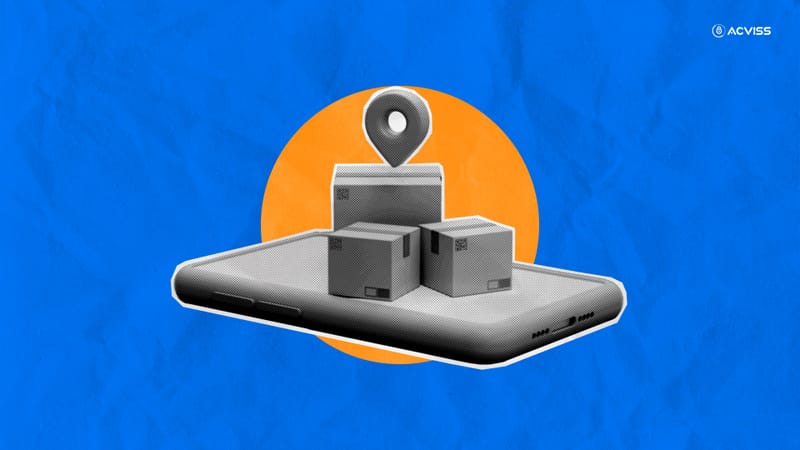Implementing Track and Trace Solutions for Enhanced Product Serialization

Contents
- Understanding Product Serialization:
- Benefits of Product Serialization:
- 1. Enhanced Supply Chain Visibility:
- 2. Improved Regulatory Compliance
- 3. Counterfeit Prevention
- 4. Improved Product Recalls
- Implementing Track and Trace Solutions:
- 1. Assessing Business Needs
- 2. Selecting the Right Technology:
- 3. Integration with Existing Systems:
- Bonus Points to Consider for a Successful Product Serialization Implementation
- Conclusion
As an expert in track and trace solutions, Acviss is dedicated to assisting manufacturers and brand owners in implementing robust product serialization systems. It plays a pivotal role in supply chain security, brand protection, and regulatory compliance. In this comprehensive guide, we delve into the process of implementing track-and-trace solutions to achieve effective product serialization.
Understanding Product Serialization:
Product serialization involves assigning unique identifiers to individual products or batches, enabling their identification and traceability throughout the supply chain. This process typically involves encoding information such as batch number, manufacturing date, and expiration date into a unique serial number.
Benefits of Product Serialization:
1. Enhanced Supply Chain Visibility:
Serialization provides real-time product tracking, giving manufacturers and brand owners unparalleled insight into their supply chain operations. They can pinpoint the location of any product at any given time, streamlining inventory management, identifying bottlenecks, and optimizing logistics.
2. Improved Regulatory Compliance
Stringent regulations in various industries mandate product traceability and authentication. Serialization ensures compliance with these regulations, mitigating risks associated with non-compliance, such as fines, product recalls, and reputational damage.
3. Counterfeit Prevention
Serialization acts as a powerful weapon against counterfeiters. It allows for the verification of genuine products and the identification of fraudulent ones. Consumers can scan the unique code and instantly confirm the product's authenticity, protecting them from purchasing fake or potentially harmful goods. This fosters consumer trust and brand loyalty.
4. Improved Product Recalls
In the unfortunate event of a product recall, serialization enables targeted and efficient action. Manufacturers can quickly identify and isolate affected products, minimizing risks to consumers and brand reputation.
Implementing Track and Trace Solutions:
1. Assessing Business Needs
The foundation of success lies in understanding your specific requirements. Conduct a comprehensive assessment that considers:
- Supply Chain Complexities: Analyze the number of products, production volume, and geographic distribution of your supply chain.
- Regulatory Obligations: Research and comprehend all relevant regulations about product traceability and authentication in your industry.
- Brand Protection Goals: Identify the level of protection needed for your brand against counterfeiting.
Involve key stakeholders, such as supply chain managers, quality control teams, and marketing executives, in this assessment. Aligning departmental objectives with the serialization initiative is crucial for its success.

2. Selecting the Right Technology:
The market offers a variety of track and trace solutions. Here are key factors to consider when choosing the right one:
- Scalability: Ensure the solution can adapt to your future growth plans, accommodating an increasing number of products or production volume.
- Integration Capabilities: The solution should seamlessly integrate with your existing enterprise systems like ERP (Enterprise Resource Planning) and MES (Manufacturing Execution Systems) for efficient data exchange.
- Ease of Use: User-friendliness is essential for smooth adoption and efficient operation of the system by employees.
- Robust Serialization Features: The solution should provide functionalities for secure generation, management, and verification of unique serial numbers.
Also, 5 Steps to Choose the Best Anti-Counterfeiting Technology for Your Brand
3. Integration with Existing Systems:
Seamless integration of your track and trace solution with existing enterprise systems is vital. This allows for automatic data capture and eliminates the need for manual data entry, reducing errors and improving efficiency. Collaboration with IT and operations teams ensures a smooth integration process with minimal disruption to ongoing operations.
4. Training and Education:
Employees involved in implementing and utilizing the track and trace solution require comprehensive training. This ensures they understand the system functionalities, data collection procedures, and best practices for product serialization. Additionally, educate stakeholders across the organization on the importance of product serialization in supply chain security and brand protection. Fostering a culture of serialization awareness is critical for successful implementation.
5. Continuous Monitoring and Improvement:
Don't consider serialization a one-time implementation. Establish protocols for ongoing monitoring of the track and trace system. Regularly identify and address any issues like system glitches or inefficiencies in data capture. Furthermore, continuously evaluate the effectiveness of your serialization processes and technologies. As regulations evolve and technology advances, adapt and implement improvements to enhance performance and compliance.
Bonus Points to Consider for a Successful Product Serialization Implementation
1. Choosing the Right Serialization Standard:
There are various serialization standards with specific requirements for data formatting and communication protocols. Popular options include GS1 standards (used globally) and EPC (Electronic Product Code) standards (widely used in the US). Consider factors like industry prevalence, regulatory requirements, and trading partner compatibility when selecting a standard.
2. Data Management Strategy:
Serialization generates a significant amount of data. Develop a comprehensive data management strategy that addresses:
3. Partner Selection:
Partnering with the right track and trace solution provider is vital for success. Look for a provider with:
4. Communication and Collaboration:
Throughout the implementation process, maintain open communication and collaboration with all stakeholders. This includes:
5. Future-Proofing:
The landscape of track and trace technology is constantly evolving. Consider scalability and adaptability when choosing solutions. Opt for systems that can integrate with emerging technologies like blockchain and the Internet of Things (IoT) for future-proofed serialization capabilities.
Conclusion
By following these steps and partnering with Acviss, manufacturers and brand owners can successfully implement track-and-trace solutions for enhanced product serialization.
With our expertise and industry-leading solutions, businesses can achieve greater supply chain visibility, regulatory compliance, and brand integrity.
